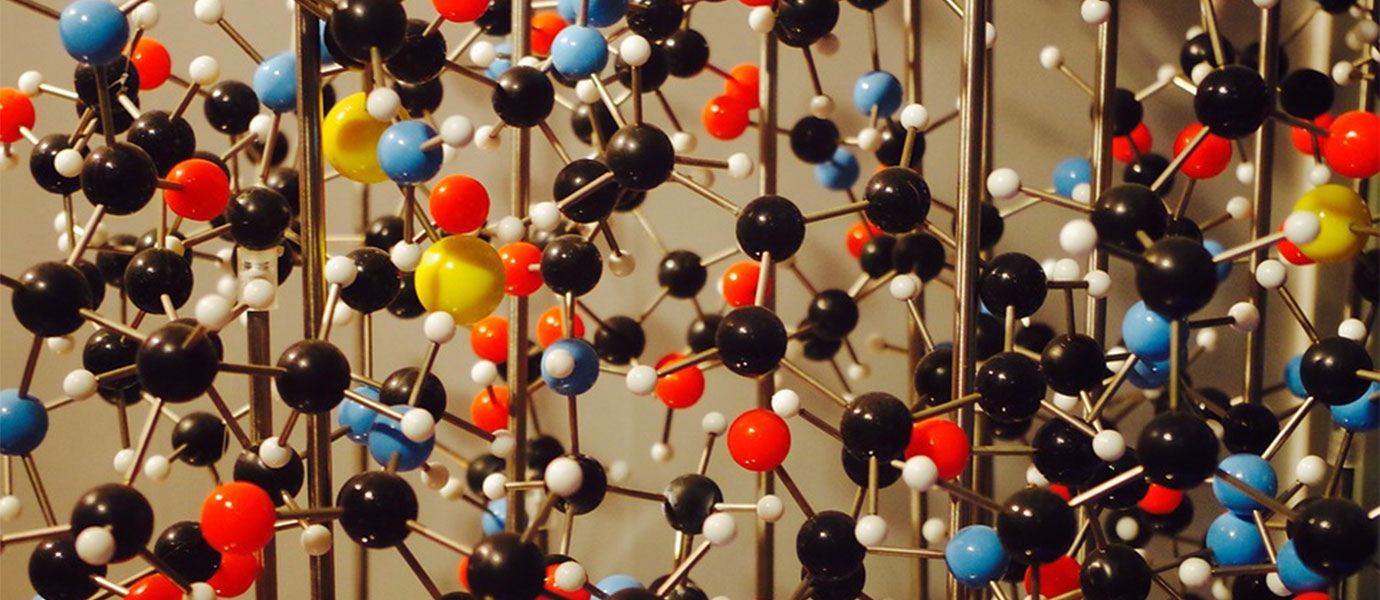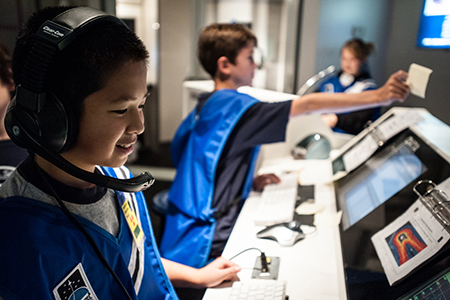
FIELD TRIPS
The Discovery Science Center and Planetarium is a hands-on science museum and planetarium. At the Center, visit exhibits, the Discovery's Challenger Center where visitors are immersed in a mock space station and mission control simulation experience and see a planetarium show. Engage in a Learning Lab designed to support learning with the Next Generation Science Standards.
supports classroom learning in:
Astronomy, Science, STEM
topics covered:
Biology, chemistry, climate, earth science, engineering, forensic science, light, physics, science, space
contact info
Name: Heather Greene
Phone: 203-416-3558
Email: [email protected]
INFO
OUTREACH PROGRAMS
Can’t come to Discovery? We will bring the science to you! Many of our Learning Labs and live science demonstrations can travel to your location. Learn more about educational programs and let us know what you’d like to bring to your school, library, or community center.
supports classroom learning in:
Astronomy, Science, STEM
topics covered:
Biology, chemistry, climate, earth science, engineering, forensic science, light, physics, science, space
contact info
Name: Heather Greene
Phone: 203-416-3558
Email: [email protected]
INFO
ABOUT
Sacred Heart University Discovery Science Center and Planetarium
Explore the cosmos and touch a meteorite that fell to Earth 50,000 years ago. Capture the thrill of wild weather, take a tour of exoplanets, or unlock the secrets of the Earth on a giant, 3D sphere. Test physics (without even knowing!) using pulley chairs, climbing obstacles, and foam forts. Make your trip amazing with learning labs, science demos, space missions, and planetarium shows! See website for a full list of programs and information.
contact info
Hrs: Tues.-Thurs. 10am – 6pm, Fri.-Sun. 10am – 5pm, Mon. members only 10am – 5pm
HELPFUL LESSON PLAN(S)
Prepared by FieldTripDirectory.com
Science Museum Lesson Plan
There are a wide variety of science museums out there. From archaeological artifacts to galactic adventures in museum planetarium domes, there’s something for just about everyone!
Many science museums offer interactive experiences for youth groups such as labs and simulated space missions. Find a science museum with offerings that align with your curriculum goals for a field trip that’ll be worth while.
Put on those lab coats and goggles! Students step into the shoes of scientists. Gear up for an exploration of science and all it has to offer.
View Lesson Plan>>Planetarium Lesson Plan
FUN FACTS
Earth has more exposed water than land. Three quarters of the Earth is covered by water! The earth has one moon.
Venus is the brightest planet in our sky and can sometimes be seen with the naked eye if you know where to look. It is the solar system’s brightest planet — yellow clouds of sulfuric acid reflect the sun’s light.
Jupiter is so big that you could fit all the other planets in the solar system inside it.
Pluto is no longer considered a planet — instead, astronomers call it a dwarf planet or planetoid.
View Lesson Plan>>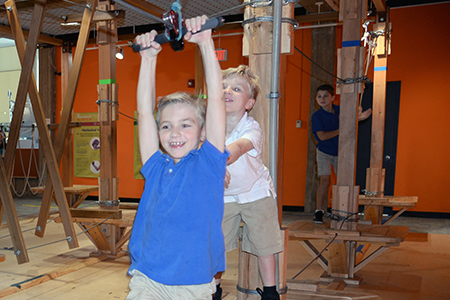
FIELD TRIPS
The Discovery Science Center and Planetarium offers STEM programs for all Scout Groups can be used to fulfill badge requirements and more. Enjoy an Overnight at the Museum with a Planetarium show, science demonstrations, movies, and exploration of exhibits after hours.
supports scout badges in:
Astronomy, Science, STEM
topics covered:
Space, Engineering, Forensic
contact info
Name: Heather Greene
Phone: 203-416-3558
Email: [email protected]
INFO
ABOUT
Sacred Heart University Discovery Science Center and Planetarium
Explore the cosmos and touch a meteorite that fell to Earth 50,000 years ago. Capture the thrill of wild weather, take a tour of exoplanets, or unlock the secrets of the Earth on a giant, 3D sphere. Test physics (without even knowing!) using pulley chairs, climbing obstacles, and foam forts. Make your trip amazing with learning labs, science demos, space missions, and planetarium shows! See website for a full list of programs and information.
contact info
Hrs: Tues.-Thurs. 10am – 6pm, Fri.-Sun. 10am – 5pm, Mon. members only 10am – 5pm
HELPFUL LESSON PLAN(S)
Prepared by FieldTripDirectory.com
Science Museum Lesson Plan
There are a wide variety of science museums out there. From archaeological artifacts to galactic adventures in museum planetarium domes, there’s something for just about everyone!
Many science museums offer interactive experiences for youth groups such as labs and simulated space missions. Find a science museum with offerings that align with your curriculum goals for a field trip that’ll be worth while.
Put on those lab coats and goggles! Students step into the shoes of scientists. Gear up for an exploration of science and all it has to offer.
View Lesson Plan>>Planetarium Lesson Plan
FUN FACTS
Earth has more exposed water than land. Three quarters of the Earth is covered by water! The earth has one moon.
Venus is the brightest planet in our sky and can sometimes be seen with the naked eye if you know where to look. It is the solar system’s brightest planet — yellow clouds of sulfuric acid reflect the sun’s light.
Jupiter is so big that you could fit all the other planets in the solar system inside it.
Pluto is no longer considered a planet — instead, astronomers call it a dwarf planet or planetoid.
View Lesson Plan>>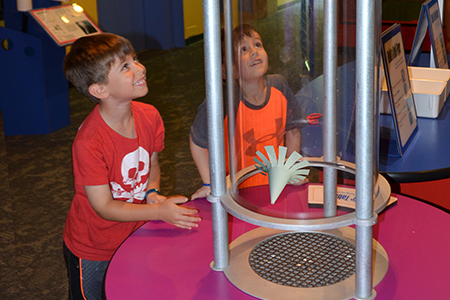
FIELD TRIPS
The Discovery Science Center and Planetarium offers presentations and activities including topics such as chemistry, space travel, light and sound, engineering, biology, and more. Bring your camp to Discovery for planetarium shows, live demonstrations, and hands-on exhibits, or book a traveling program to bring the science to you!
topics covered:
Biology, chemistry, climate, earth science, engineering, forensic science, light, physics, science, space
contact info
Name: Heather Greene
Phone: 203-416-3558
Email: [email protected]
INFO
ABOUT
Sacred Heart University Discovery Science Center and Planetarium
Explore the cosmos and touch a meteorite that fell to Earth 50,000 years ago. Capture the thrill of wild weather, take a tour of exoplanets, or unlock the secrets of the Earth on a giant, 3D sphere. Test physics (without even knowing!) using pulley chairs, climbing obstacles, and foam forts. Make your trip amazing with learning labs, science demos, space missions, and planetarium shows! See website for a full list of programs and information.
contact info
Hrs: Tues.-Thurs. 10am – 6pm, Fri.-Sun. 10am – 5pm, Mon. members only 10am – 5pm
HELPFUL LESSON PLAN(S)
Prepared by FieldTripDirectory.com
Science Museum Lesson Plan
There are a wide variety of science museums out there. From archaeological artifacts to galactic adventures in museum planetarium domes, there’s something for just about everyone!
Many science museums offer interactive experiences for youth groups such as labs and simulated space missions. Find a science museum with offerings that align with your curriculum goals for a field trip that’ll be worth while.
Put on those lab coats and goggles! Students step into the shoes of scientists. Gear up for an exploration of science and all it has to offer.
View Lesson Plan>>Planetarium Lesson Plan
FUN FACTS
Earth has more exposed water than land. Three quarters of the Earth is covered by water! The earth has one moon.
Venus is the brightest planet in our sky and can sometimes be seen with the naked eye if you know where to look. It is the solar system’s brightest planet — yellow clouds of sulfuric acid reflect the sun’s light.
Jupiter is so big that you could fit all the other planets in the solar system inside it.
Pluto is no longer considered a planet — instead, astronomers call it a dwarf planet or planetoid.
View Lesson Plan>>
FIELD TRIPS
At The Discovery Science Center and Planetarium, Homeschool groups can enjoy the hands-on presentations and activities including topics such as chemistry, space travel, light and sound, engineering, biology, and more.
supports classroom learning in:
Astronomy, Science, STEM
topics covered:
Biology, chemistry, climate, earth science, engineering, forensic science, light, physics, science, space
contact info
Name: Heather Greene
Phone: 203-416-3558
Email: [email protected]
INFO
ABOUT
Sacred Heart University Discovery Science Center and Planetarium
Explore the cosmos and touch a meteorite that fell to Earth 50,000 years ago. Capture the thrill of wild weather, take a tour of exoplanets, or unlock the secrets of the Earth on a giant, 3D sphere. Test physics (without even knowing!) using pulley chairs, climbing obstacles, and foam forts. Make your trip amazing with learning labs, science demos, space missions, and planetarium shows! See website for a full list of programs and information.
contact info
Hrs: Tues.-Thurs. 10am – 6pm, Fri.-Sun. 10am – 5pm, Mon. members only 10am – 5pm
HELPFUL LESSON PLAN(S)
Prepared by FieldTripDirectory.com
Science Museum Lesson Plan
There are a wide variety of science museums out there. From archaeological artifacts to galactic adventures in museum planetarium domes, there’s something for just about everyone!
Many science museums offer interactive experiences for youth groups such as labs and simulated space missions. Find a science museum with offerings that align with your curriculum goals for a field trip that’ll be worth while.
Put on those lab coats and goggles! Students step into the shoes of scientists. Gear up for an exploration of science and all it has to offer.
View Lesson Plan>>Planetarium Lesson Plan
FUN FACTS
Earth has more exposed water than land. Three quarters of the Earth is covered by water! The earth has one moon.
Venus is the brightest planet in our sky and can sometimes be seen with the naked eye if you know where to look. It is the solar system’s brightest planet — yellow clouds of sulfuric acid reflect the sun’s light.
Jupiter is so big that you could fit all the other planets in the solar system inside it.
Pluto is no longer considered a planet — instead, astronomers call it a dwarf planet or planetoid.
View Lesson Plan>>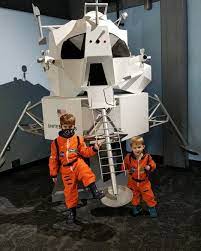
FAMILY OUTINGS
Discovery is home to three floors of interactive exhibits, including health science, forces and motion, space science, engineering, and more! Check out our daily public presentations in the planetarium plus other special offerings in our theater. We offer many discounts and special events throughout the year!
topics covered:
Biology, chemistry, climate, earth science, engineering, forensic science, light, physics, science, space
contact info
Name: Heather Greene
Phone: 203-416-3558
Email: [email protected]
INFO
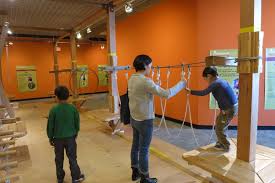
BIRTHDAY PARTIES
Host your party at Discovery! Parties include a STEAM-themed activity for your intrepid young scientists, as well as time for food and cake in a private party room! Leave all the set up and clean up to us! We will supply the paper goods and table cloths, as well as some light “themed” decorating. All parties come with a STEAM host to lead you and your guests through the activity and to help with party needs.
topics covered:
Biology, chemistry, climate, earth science, engineering, forensic science, light, physics, science, space
contact info
Name: Heather Greene
Phone: 203-416-3558
Email: [email protected]
INFO
ABOUT
Sacred Heart University Discovery Science Center and Planetarium
Explore the cosmos and touch a meteorite that fell to Earth 50,000 years ago. Capture the thrill of wild weather, take a tour of exoplanets, or unlock the secrets of the Earth on a giant, 3D sphere. Test physics (without even knowing!) using pulley chairs, climbing obstacles, and foam forts. Make your trip amazing with learning labs, science demos, space missions, and planetarium shows! See website for a full list of programs and information.
contact info
Hrs: Tuesday-Thursday 10am – 6pm, Friday-Sunday 10am – 5pm, Monday members only 10am – 5pm

